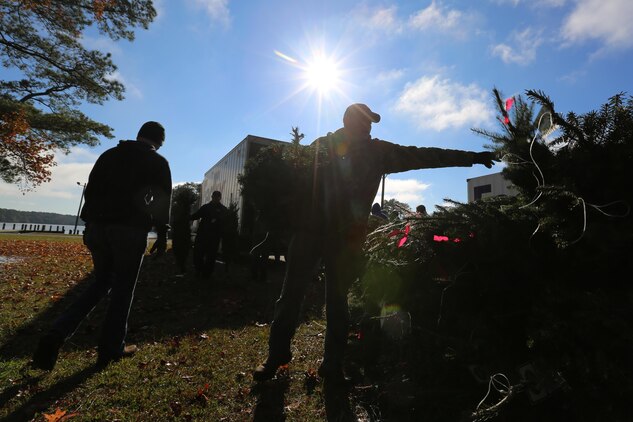My Most recommended Tree Was A Tree
European Birdcherry Tree (Prunus padus) Zones 3-6; This tree is easily grown in average, medium, well-drained soils completely sun to part shade. It is adaptable to a wide range of soils. This tree is a deciduous decorative cherry tree that generally grows 20-40' tall with a rounded crown. It has fragrant white flowers in 3-6" long clusters that appear after the foliage emerges in spring. The flowers are followed by pea-sized, black cherries which ripen in mid-summer. This tree is closely-related to the fruit and the chokecherry is very bitter to human beings but the birds love it. The leaves turn yellow in the fall.
Yoshingo Cherry Tree (Prunus x yedoensis yoshino) Zones 5-8; This tree grows in average, medium moisture, well-drained soils completely sun to part shade. However, it will do the best completely sun. It tolerates heat and humidity well, but is delicate to dry spell conditions. It is versatile to a wide variety of soils. This cherry tree is an elegant decorative blooming cherry tree that usually grows 30-40' high with a spreading, broad-rounded, open crown. Aromatic white (sometimes tinged pink) flowers in 3 to 6-flowered clusters appear in a excessive and spectacular early spring flower. Flowers are followed by little black cherries (1/2" size) which are bitter to people but enjoyed by birds. Foliage turns yellow and with bronze tints in fall. The spring flowers are the trees finest decorative function; and are an outstanding small to medium-sized tree for yards, along streets, surrounding to outdoor patios or decks.
Little-Leaf Linden (Tilia cordata) Zones 3-7; This tree is easily grown in average, medium, well-drained soils completely sun to part shade. It chooses moist, fertile, well-drained loams, but adapts to a http://edition.cnn.com/search/?text=trees wide variety of soil conditions. Good tolerance for metropolitan conditions. Tolerant of heavy pruning, and might be grown as a hedge. Belonging to Europe, the littleleaf linden has been extensively planted in the U. S. as a decorative shade tree since of its attractive foliage, dense, low-branched, pyramidal to ovate kind and its tolerance for city conditions. Decorative functions include aromatic pale yellow flowers in late spring, little nutlets with connected leafy wings (to 3.5" long) and ovate, glossy dark green leaves (to 3" long). This is a medium to large deciduous tree, normally growing to 50-70' (less frequently to 100') tall. It has aromatic, velvety yellow flowers in drooping cymes appear in June. When a tree is in full bloom, bees typically visit in such abundant numbers that humming can be heard lots of feet from the tree. The flowers pave the way to nutlets that are attached to narrow bract-like wings (leading 3.5" long). The fall color is an undistinguished pale green to pale yellow. This is a great shade, yard, or street tree and from a landscaping viewpoint lots of consider this species to be the best of all lindens.
![]()
European Linden (Tilia x europaea) Zones 3-7; This tree is easily grown in average, medium, http://www.mesatrees.com well-drained soils completely sun to part shade. It Chooses wet, fertile, well-drained loams, but adapts to a large range of soil conditions and has a great tolerance for metropolitan conditions. Quickly eliminate root suckers as they appear. The European linden is a hybrid cross between 2 native European lindens (T. cordata x T. platyphyllos). It is possibly most comparable to its T. platyphyllos parent, which is the tree celebrated by Franz Schubert in Der Lindenbaum (The Linden Tree). This hybrid is a medium to big deciduous tree, typically growing to 50-70' (less regularly to 120') high with a broad-columnar practice. It has aromatic pale yellow flowers that appear in late spring. When a tree is in maturity, bees typically go to in such abundant numbers that humming can be heard many feet from the tree. The flowers are followed by little nutlets connected to narrow, bract-like, strap-shaped leafy wings (to 4.5" long). The Nutlets ripen in late summer. Fall color is an undistinguished pale green to fade yellow.
Silver Linden (Tilia tomentosa) Zones 4-7; This Tree is easily grown in average, dry to medium, well-drained soils completely sun to part shade. It chooses damp, fertile, well-drained loams, but adapts to a wide range of soil conditions. Finest dry spell resistance of any of the lindens. Great tolerance for urban conditions. The silver linden or European white linden is kept in mind for its appealing foliage, which is shiny green above and silvery-white below. The foliage flutters in the tiniest breeze, showcasing the silver and green leaf colors. This is a medium to big deciduous tree, typically growing to 50-70' (less often to 100') tall with upright branching and a broad-columnar routine. It develops fragrant pale yellow flowers in late spring to early summertime (June-July). This tree is likewise understood to attract bees. The flowers are followed by little nutlets connected to narrow, strap-shaped leafy wings (to 2.5" long). Fall color is an undistinguished pale green to pale yellow.
